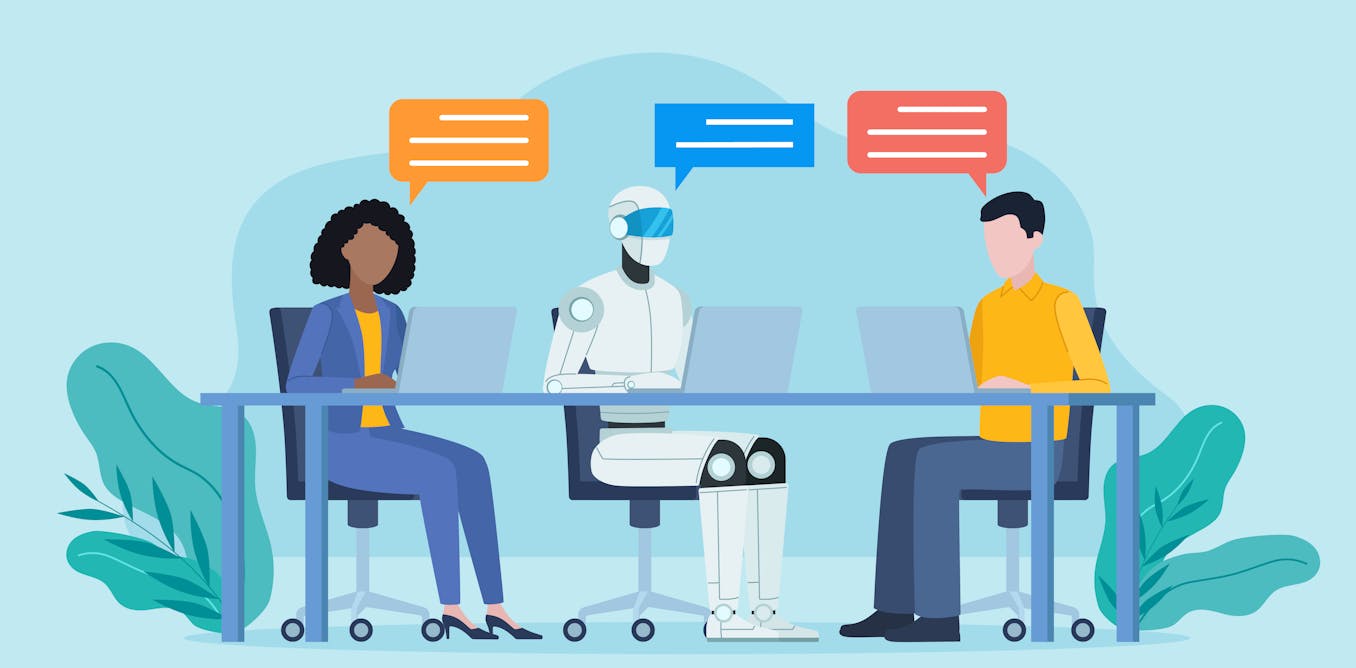Boardwalk Robotics is announcing its entry into the increasingly crowded commercial humanoid(ish) space with Alex, a “workforce transformation” humanoid upper torso designed to work in manufacturing, logistics, and maintenance.
Before we get into Alex, let me take just a minute here to straighten out how Boardwalk Robotics is related to IHMC, the Institute for Human Machine Cognition in Pensacola, Florida. IHMC is, I think it’s fair to say, somewhat legendary when it comes to bipedal robotics—its DARPA Robotics Challenge team took second place in the final event (using a Boston Dynamics DRC Atlas), and when NASA needed someone to teach the agency’s Valkyrie humanoid to walk better, they sent it to IHMC.
Boardwalk, which was founded in 2017, has been a commercial partner with IHMC when it comes to the actual building of robots. The most visible example of this to date has been IHMC’s Nadia humanoid, a research platform which Boardwalk collaborated on and built. There’s obviously a lot of crossover between IHMC and Boardwalk in terms of institutional knowledge and experience, but Alex is a commercial robot developed entirely in-house by Boardwalk.
“We’ve used Nadia to learn a lot in the realm of dynamic locomotion research, and we’re taking all that and sticking it into a manipulation platform that’s ready for commercial work,” says Brandon Shrewsbury, Boardwalk Robotics’ CTO. “With Alex, we’re focusing on the manipulation side first, getting that well established. And then picking the mobility to match the task.”
The first thing you’ll notice about Alex is that it doesn’t have legs, at least for now. Boardwalk’s theory is that for a humanoid to be practical and cost effective in the near term, legs aren’t necessary, and that there are many tasks that offer a good return on investment where a stationary pedestal or a glorified autonomous mobile robotic base would be totally fine.
“There are going to be some problem sets that require legs, but there are many problem sets that don’t,” says Robert Griffin, a technical advisor at Boardwalk. “And there aren’t very many problem sets that don’t require halfway decent manipulation capabilities. So if we can design the manipulation well from the beginning, then we won’t have to depend on legs for making a robot that’s functionally useful.”
It certainly helps that Boardwalk isn’t at all worried about developing legs: “Every time we bring up a new humanoid, it’s something like twice as fast as the previous time,” Griffin says. This will be the eighth humanoid that IHMC has been involved in bringing up—I’d tell you more about all eight of those humanoids, but some of them are so secret that even I don’t know anything about them. Legs are definitely on the roadmap, but they’re not done yet, and IHMC will have a hand in their development to speed things along: It turns out that already having access to a functional (top of the line, really) locomotion stack is a big head start.
Alex’s actuators are all designed in-house, and the next version will feature new grippers that allow for quicker tool changes.Boardwalk Robotics
While the humanoid space is wide open right now and competition isn’t really an issue, looking ahead, Boardwalk sees safety as one of its primary differentiators since it’s not starting out with legs, says Shrewsbury. “For a full humanoid, there’s no way to make that completely safe. If it falls, it’s going to faceplant.” By keeping Alex on a stable base, it can work closer to humans and potentially move its arms much faster while also preserving a dynamic safety zone.

Alex is available for researchers to purchase immediately.Boardwalk Robotics
Despite its upbringing in research, Alex is not intended to be a research robot. You can buy it for research purposes, if you want, but Boardwalk will be selling Alex as a commercial robot. At the moment, Boardwalk is conducting pilot programs with Alex where they’re working in partnership with select customers, with the eventual goal of transitioning to a service model. The first few sectors that Boardwalk is targeting include logistics (because of course) and food processing, although as Boardwalk CEO Michael Morin one of the very first pilots is (appropriately enough) in aviation.
Morin, who helped to commercialize Barrett Technologies’ WAM Arm before spending some time at Vicarious Surgical as that company went public, joined Boardwalk to help them turn good engineering into a good product, which is arguably the hardest part of making useful robots (besides all the other hardest parts). “A lot of these companies are just learning about humanoids for the first time,” says Morin. “That makes the customer journey longer. But we’re putting in the effort to educate them on how this could be implemented in their world.”
If you want an Alex of your very own, Boardwalk is currently selecting commercial partners for a few more pilots. And for researchers, the robot is available right now.

The post “Meet Boardwalk Robotics’ Addition to the Humanoid Workforce” by Evan Ackerman was published on 08/22/2024 by spectrum.ieee.org

The post “Introducing Boardwalk Robotics’ Newest Addition to the Humanoid Workforce ” by GretAi was published on 08/22/2024 by news.gretai.com





































Leave a Reply